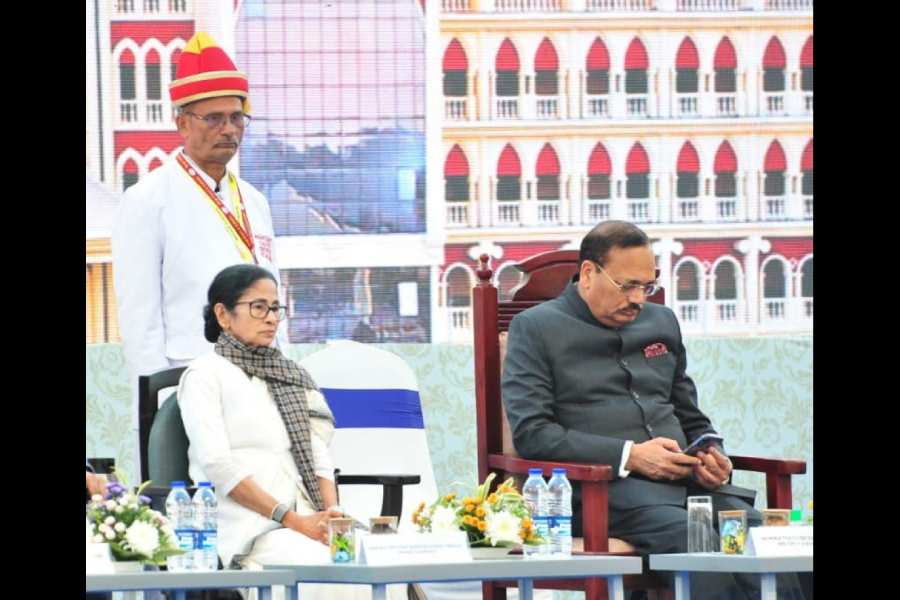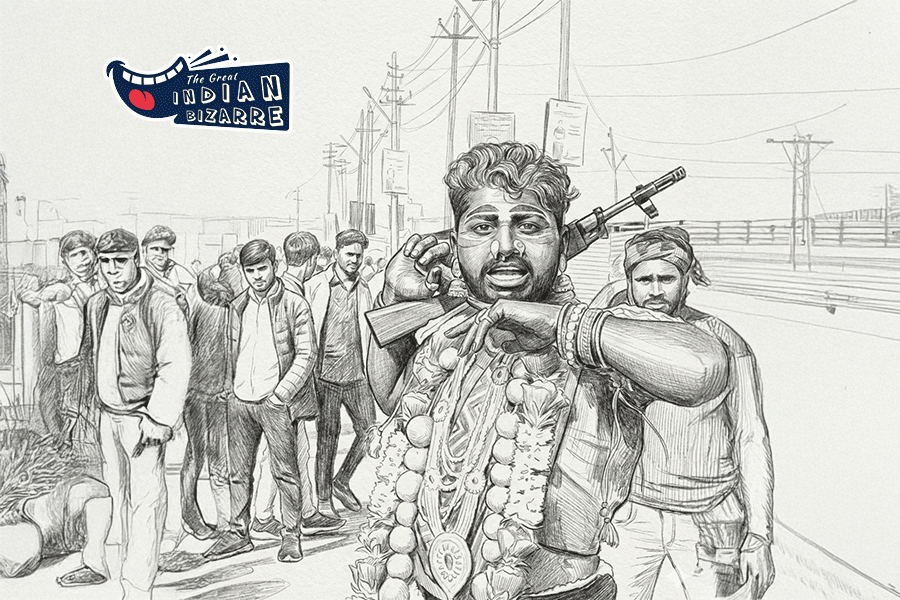 |
M.S. Sathyu drives up the busy street in residential Malleswaram, in north-west Bangalore, parks expertly, collects his bag and walks up a flight of stairs to his office. He stoops and unlocks the padlock from the shutter which he then swiftly dispatches northward. We walk into a roomy den lined with film, art and theatre display, to his tiny work station at the back, where the sun streams in. In a striped kurta-pyjama and brown waistcoat and a mane of white, Sathyu’s energy and affable vivacity give the lie to his 82 years.
Nearly four decades after its release in 1973, Garam Hawa, his classic debut film, is set to make a comeback in the theatre this month after a digital-Dolby facelift. The director feels the topic has lost none of its relevance, especially for the now generation for whom the Partition and its consequences are merely a text book topic.
“The film will be released pan-India. I am basically interested that the younger generation comes and sees the film. There are certain films which will be universal, in any country at any time. This is one such film. Because a lot of people were born after Independence, they hardly know what happened during the Partition,” says Sathyu. The restored film was screened at the Goa Film festival to a full house. “They liked the film; a lot of people who had never seen the film saw it.”
The film — which revolves around a Muslim shoe manufacturer in Agra whose family is torn apart in the communal upheaval — was restored digitally and sent to Los Angeles where it was converted to Dolby digital and surround sound from the original mono track. Suresh Chedda, a film buff in Mumbai, initiated the whole exercise. He wanted to bring out the first official DVD but on exploring the quality of the print suggested restoring it entirely.
Was the master copy in good shape, I ask Sathyu, who owns the film which was financed by the Film Finance Corporation (now National Film Development Corporation). “No, no, it was very bad, it was full of scratches,” he replies. “Some portions were torn — all that has been corrected.” The NFDC, he adds, had once sent his negative to a lab in London. “They spoiled the whole thing and it came back in fragments. NFDC is also very careless. They don’t think of the negative, the quality, how to maintain it and things like that.”
The director is pleased with the results now. The new release will have English subtitles too. The original film is in Urdu, with a distinct Agra dialect. “It is not possible to translate some of the phrases to English. There are no equivalents,” he smiles.
Despite his disaffection for NFDC, Sathyu had approached them with the script of his next film, a fictionalised musical based on a real life musician, “with classical music and dance and some amount of Rabindra Sangeet” which would be shot in several cities including Calcutta, Mumbai, Allahabad, Mysore and Varanasi. Two filmmakers from Calcutta have offered to produce the film. “Let’s see which one works out. One of them produces mainstream Bengali films and wants to change the image of his company,” he twinkles.
Garam Hawa got stuck at the censor’s for a year. He knew Indira Gandhi and Inder Kumar Gujral personally, but says they were not able to help. “They were very scared about the film.” It was election time and they feared the film could sway Muslim votes. Sathyu had to keep paying NFDC 15 per cent interest while the film awaited release. “I am perhaps the only person who has returned money to NFDC with interest on two films.”
Would he have been able to make Garam Hawa today when films are constantly attacked by some religious or political constituency or the other?
“Any kind of controversial film can be made. There is no restriction as such. But the Censor Board is a pain in the neck. Unnecessary,” he snorts. “If television, print or radio can be self regulated, why not film?”
The initial four-member committee of the Censor Board suggested that the film be banned. The 13-member review committee, however, was delighted with the film. “The whole file is with the Censor Board, which I have read, secretly, because it is not supposed to be shown to me,” Sathyu says. The film went on to get the National Integration Award and was nominated at Cannes for the Palme d’Or.
Balraj Sahni’s poignant portrayal as Salim Mirza remains etched in filmgoers’ memory. Sathyu knew Sahni from their theatre days. Sathyu had also directed Sahni as Ghalib in the landmark play Aakhri Shama, which was staged at the Red Fort. “He was a fantastic actor. All the artistes in Garam Hawa were from the IPTA — from the Bombay, Agra or Delhi IPTA,” says Sathyu, referring to the Left-led Indian People’s Theatre Association. He joined the IPTA in 1965 and still directs plays for them.
One person who was not from the IPTA was “Mirza’s mother”, Badr Begum. The role was originally meant for the singer, Begum Akhtar, but she refused the role because her husband did not want her to act.
The search for a replacement began. The haveli in Agra where the crew was shooting belonged to a certain R.S. “Mathur saab” who had many tales to relate about the tawaifs (dancing girls) during his grandfather’s time. “I asked Mathur saab, ‘Why don’t you take us to one of these people. Now they must be very old in any case,’” narrates Sathyu.
They landed up in a narrow gali and banged on a door. A woman called out asking them to go away. “Somebody from Bombay wants to meet you,” Mathur saab said. “What does he want to meet me for,” the woman replied. She was finally persuaded to open the door.
The woman was Badr Begum. “We were at a brothel and all the girls had been picked up by the police that night. Irshad, my cameraman, and I observed her, then offered her the role. She started crying uncontrollably. We were taken aback,” he recounts.
At 16, she said, she had gone to Bombay with her brother to be a star but they soon ran out of money. Ultimately, they worked as extras in a crowd scene for Rs 7 a day. They managed to save money for the fare back to Agra and eventually she turned to prostitution, and ended up as a brothel owner.
“‘How can I refuse you when you have come to my threshold after so many years and my ambition was to become an actor?’ Her story was a very sad story. For Garam Hawa she got two awards, one from the UP Film Journalists’ Association, and one from the Bengal Film Journalists’ Association. She died some years ago.”
No one could have anticipated the response to Garam Hawa, certainly not the filmmakers themselves. “We just knew that we were making an honest film. It became a landmark film later. The minority communities, like the Christians, Muslims, Marwaris, are caricatured in our films and never treated as equal citizens. Here Muslims are shown as part of the mainstream. That is the newness,” Sathyu stresses.
Sathyu was born in Mysore in a family of mostly engineers and grew up in Bangalore, before he left for Bombay in 1952 to try his luck in film and theatre as an art director. Director Chetan Anand persuaded him to become his assistant director — and Sathyu went on to win the peer-selected Filmfare award as art director for Anand’s Haqeeqat.
“Bombay was a place full of opportunities for anyone who would work hard and had a certain amount of talent,” he says. Amid hearty laughter, he says he left the city when “the Shiv Sena came to power.”
Bangalore is not so “communal”, says Sathyu. The conversation veers briefly towards fellow-Kannada writer, dramatist-actor Girish Karnad, and his recent utterances disparaging V.S. Naipaul and Tagore.
“Stupid! Stupid, it is! There is no need for him to make such statements about Naipaul or on Tagore. Nobody ever said Tagore was a great playwright — he was basically a poet. Whatever I have read of V.S. Naipaul, my perception is that he is not anti-Muslim. He wrote some things against Islamic terrorists after the World Trade Towers went down in New York.”
Karnad, he emphasises, made “some totally stupid” statements. “A writer of Girish’s calibre shouldn’t talk of other writers in that manner. You may disagree on your own, but at a literary conference you go and make speeches. That’s not done. And both of them Nobel Laureates — so it looks like it is professional jealousy. Anyway, Girish Karnad will not get a Nobel Prize. He has written some excellent plays. Just stick to it.”
During a stint in theatre and journalism in Delhi in the Fifties, Sathyu met his wife-to-be Shama Zaidi. They married after a long relationship in 1974, a year after Garam Hawa was released. She was its costume designer and co-scriptwriter with Kaifi Azmi.
For Sathyu, who has made eight films, several documentaries and directed many plays, is Garam Hawa a legacy hard to match? “Yeah, it becomes a disadvantage when everyone starts comparing all your work to your first film. That happens to everyone. Mr Ray, for example. After Pather Panchali he could never make another Pather Panchali. Why should he? There is no need. So it is fine,” he remarks.
Of his films, Bara/Sookha (Famine) is the one that was more difficult to make than Garam Hawa. “Bara is totally political. Garam Hawa is a sentimental story which makes people cry. So when we cry in a film we think the film is very good,” he says, taking a good-natured dig at himself and the audience. His most recent film Ijjodu (Kannada, 2009) is on a devadasi theme.
There are visitors waiting and a new film club to inaugurate. His travel schedule includes play tours across the country. Clearly, 2013 is going to be a busy year for him. The re-release of a classic is just the icing on the cake.











